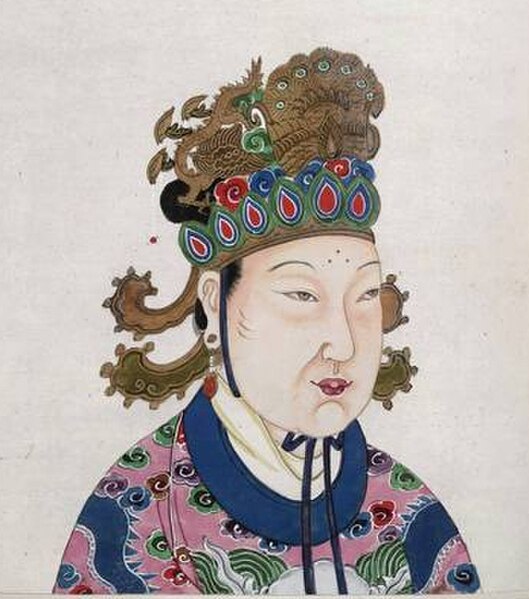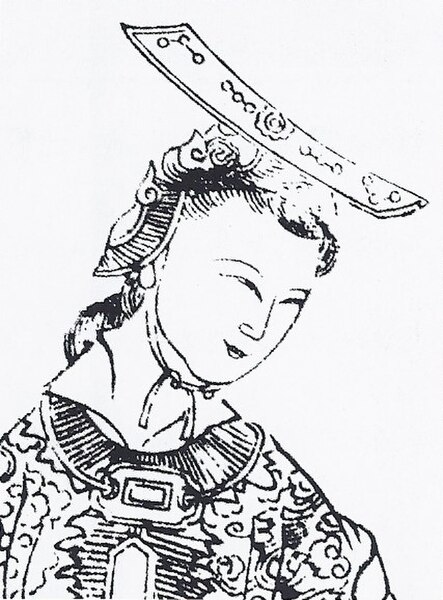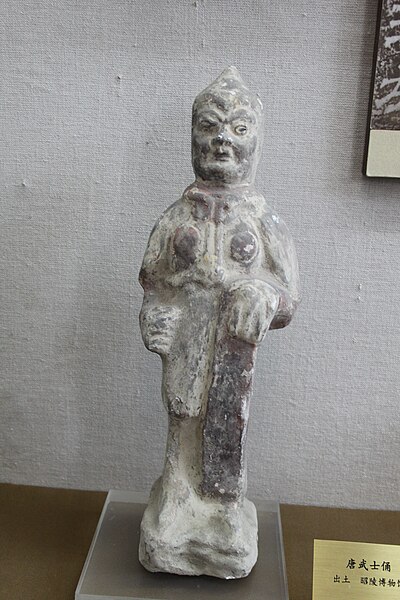Wu Zetian, personal name Wu Zhao, was Empress of China from 660 to 705, ruling first through others and then in her own right. She ruled first as empress consort, through her husband Emperor Gaozong and then as an empress dowager, through her sons Emperors Zhongzong and Ruizong, from 660 to 690, not unprecedented in Chinese history. She subsequently founded and ruled as female emperor of the Wu Zhou dynasty of China from 690 to 705. She was the only female sovereign in the history of China widely regarded as legitimate. Under her 45-year reign, China grew larger, becoming one of the great powers of the world, its culture and economy were revitalized, and corruption in the court was reduced. She was eventually removed from power during a coup and died a few months later.
Wu Zetian as depicted in An 18th century album of portraits of 86 emperors of China, with Chinese historical notes (British Library)
A painting portraying Emperor Taizong of Tang by painter Yan Liben (c. 600–673).
A depiction of Wu, from Empress Wu of the Zhou, published circa 1690
A depiction of Emperor Gaozong of Tang from An 18th century album of portraits of 86 emperors of China, with Chinese historical notes
Emperor Gaozong of Tang, personal name Li Zhi, was the third emperor of the Chinese Tang dynasty, ruling from 649 to 683; after January 665, he handed power over the empire to his second wife Empress Wu, and her decrees were carried out with greater force than the decrees of Emperor Gaozong's. Emperor Gaozong was the youngest son of Emperor Taizong and Empress Zhangsun; his elder brothers were Li Chengqian and Li Tai.
Qing dynasty illustration of Gaozong
Tang shieldbearer
Estimated territorial extent of Emperor Gaozong's empire.
Qianling Mausoleum, Tomb of Emperor Tang Gaozong and Empress Wu Zetian







